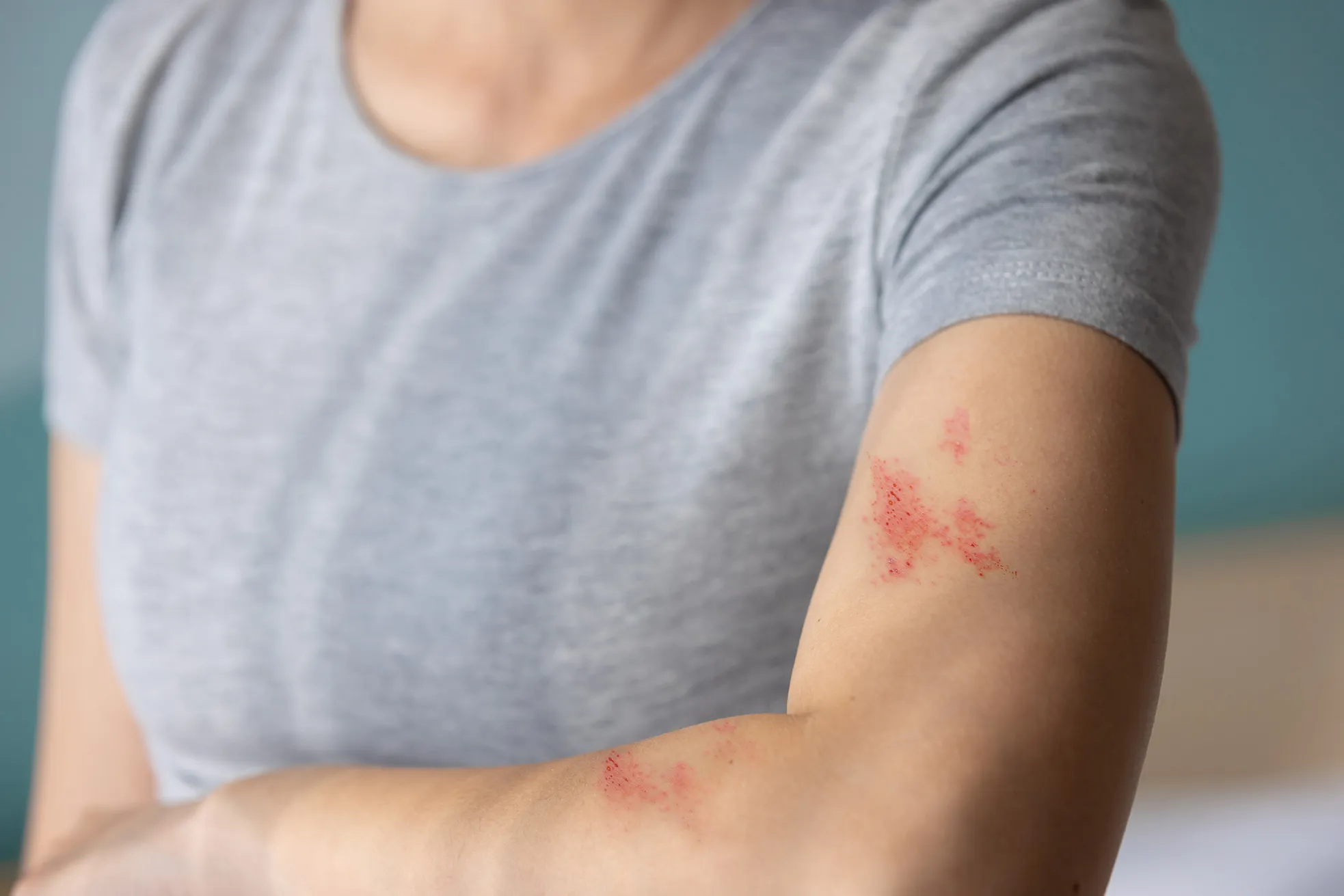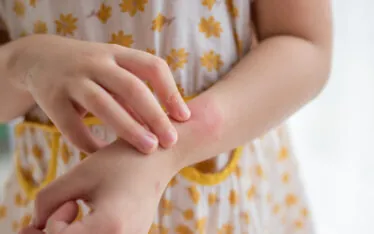Fungal, Bacterial, or Viral? How to Tell What’s Causing Your Skin Infection

Skin infections often look similar, but knowing the cause is the first step toward proper care. Fungal, bacterial, and viral infections each require a unique approach, and using the wrong treatment can make symptoms worse. Here’s how to recognize the differences and when to call a dermatologist for expert guidance.
Why Identifying the Type of Skin Infection Matters
Treatment depends on the cause, so accuracy matters. Each type of skin infection, whether it’s fungal, bacterial, or viral, responds to a different treatment. Fungal infections often need antifungal medications, bacterial infections usually require antibiotics, and viral infections may need antiviral care or vaccines.
Guessing can delay healing or lead to complications, so seeing a dermatologist ensures you start with the safest, most effective approach.
1. Fungal Skin Infections: Itchy, Red, and Spreading
Fungal infections are common in warm, moist environments and often affect areas like the feet, groin, or underarms. They thrive where skin stays damp or clothing creates friction, which is why athletes and those in humid climates are especially at risk.
What They Look Like
Fungal infections usually appear as circular, scaly, or itchy patches. They often have well-defined borders and may resemble a ring, especially in the case of ringworm. The skin can look red and irritated, and sometimes peels or flakes.
Common Types
- Athlete’s foot (tinea pedis)
- Ringworm (tinea corporis)
- Jock itch (tinea cruris)
- Yeast infections (candidiasis)
Symptoms
Redness, itching, and flaking are common signs. Symptoms tend to worsen in warm or humid conditions. In more advanced cases, the skin may crack or develop a secondary bacterial infection from scratching.
When to See a Dermatologist
If your antifungal cream isn’t working, the rash is spreading, or the area becomes painful, it’s time to get help. Infections that keep coming back can signal an underlying issue. A quick visit helps you get an accurate diagnosis and the right care before things progress.
2. Bacterial Skin Infections: Red, Swollen, and Sometimes Painful
Bacterial infections can develop quickly and often appear in areas where the skin barrier is broken, such as cuts, insect bites, or scratches. They can range from mild to severe and may require antibiotics.
What They Look Like
Look for red, swollen areas that may feel warm to the touch. Some infections ooze fluid, form yellow crusts, or develop pus-filled bumps. Unlike fungal infections, bacterial infections tend to spread rapidly if untreated.
Common Types
- Cellulitis
- Impetigo
- Folliculitis
- MRSA (Methicillin-resistant Staphylococcus aureus) infections
Symptoms
Warmth, swelling, and tenderness are early signs. As the infection worsens, you may notice pain, fever, or fatigue. Rapidly spreading redness or streaking can indicate a more serious infection.
When to See a Dermatologist
See a dermatologist right away if the redness is spreading fast, swelling gets worse, or you notice fever or chills. Boils or abscesses that keep coming back are also a sign to call. Quick treatment not only eases discomfort but helps prevent serious complications.
3. Viral Skin Infections: Blisters, Bumps, or Lesions
Viral infections can cause blisters, warts, or sores and often spread through skin contact. Some, like shingles or herpes, can be painful and come back without treatment.
What They Look Like
Lesions can vary in appearance. They may form clusters of blisters, crust over, or appear as dome-shaped bumps. Shingles often follows a nerve path, creating a band of lesions on one side of the body.
Common Types
- Herpes simplex (cold sores, genital herpes)
- Shingles (herpes zoster)
- Molluscum contagiosum
- Warts (HPV-related)
Symptoms
You might feel tingling, burning, or itching before blisters form. Outbreaks can last for weeks and often recur without treatment. Some infections, like shingles, can cause lasting nerve pain if untreated.
When to See a Dermatologist
Painful or recurring outbreaks deserve a closer look. If you have lesions that won’t heal or suspect shingles, don’t wait. Early care can ease discomfort and reduce the risk of long-term problems. Our team can confirm what’s happening and get you feeling better faster.
Can You Tell the Difference Without a Doctor?
It’s hard to tell fungal, bacterial, and viral infections apart because many symptoms overlap. Self-diagnosis often leads to using the wrong treatment, which can make things worse. Seeing a dermatologist ensures accurate testing and the right care from the start.
We use tools like cultures, swabs, and skin scrapings to confirm the cause before creating a personalized treatment plan.
What to Expect at Your Dermatology Appointment
Your appointment begins with a review of your symptoms and a close examination of the affected area. Your dermatologist may ask about when the issue started, what makes it better or worse, and any recent health changes. If necessary, they’ll take a quick swab, scraping, or culture—simple tests that give us clear answers.
Once the cause is clear, they’ll explain your treatment options—such as topical creams, oral medications, or antivirals—and answer any questions you have. Most patients start feeling better after starting the right treatment, and they’ll provide follow-up guidance to help prevent future infections.
At Clarus Dermatology, we work hard to make the process as streamlined and stress-free as possible. If you have any questions or concerns, don’t hesitate to ask.
Preventing Skin Infections
Healthy habits are the best defense. Knowing how infections spread helps you take simple steps to protect your skin and lower your risk.
General Tips
Simple habits go a long way toward preventing skin infections. Wash your hands regularly, especially after touching shared surfaces, and avoid sharing towels or razors. If you get a cut or scrape, clean it right away and keep it covered, since tiny breaks in the skin can let bacteria and viruses in.
Fungal Prevention
Fungi thrive in warm, damp environments, so keeping your skin dry is a must. Change out of sweaty clothes as soon as possible, and dry thoroughly after showers or workouts. If you’re prone to athlete’s foot or jock itch, using an antifungal powder can provide extra protection.
Bacterial Prevention
Preventing bacterial infections starts with protecting your skin barrier. Clean minor cuts immediately, apply an antiseptic if needed, and cover with a bandage. Avoid shaving over irritated or broken skin, as this can push bacteria deeper and cause infections like folliculitis.
Viral Prevention
Many viral infections spread through direct contact, so take extra care around active sores or blisters. Avoid sharing personal items like razors, lip balm, or towels, which can transmit viruses. If you’re eligible, getting vaccinated for shingles is an important step in lowering your risk for this painful condition.
Concerned About a Skin Infection? Don’t Wait
If you’ve noticed redness, swelling, or an unusual rash, don’t guess—an accurate diagnosis is the key to safe and effective treatment. At Clarus Dermatology, our team provides thorough evaluations and personalized care plans designed to target the cause and support your skin’s recovery.
Schedule a skin infection evaluation today and take the first step toward answers and expert guidance.


